
Impact Of Pacific Brant Migration In And Out Of Alaska
The following is courtesy of the U.S. Fish and Wildlife Service:
Pacific black brant migration and what they can teach us
Destination: Izembek National Wildlife Refuge
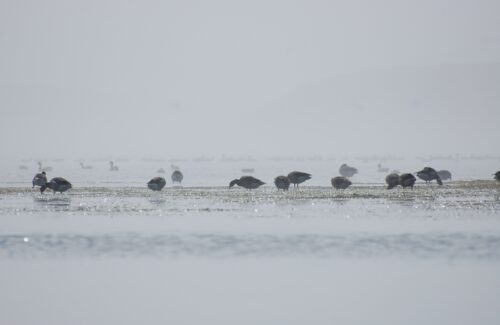
Written By Rebecca Fabbri
Imagine being able to see the world population of a particular species all in one place. For those yearning for that type of experience, Izembek National Wildlife Refuge is the go-to destination. At 310,000 acres, Alaska’s smallest national wildlife refuge hosts the global population of Pacific black brant, a subspecies of brant geese, during a portion of the year.
Every spring and fall, these brant make an epic migration between the Arctic and Baja, with a critical stopover to Izembek Lagoon, located on the east side of the refuge, to feed on their favorite food source — eelgrass. Fall is typically the peak for their numbers, where one can see a minimum of 150,000 birds.
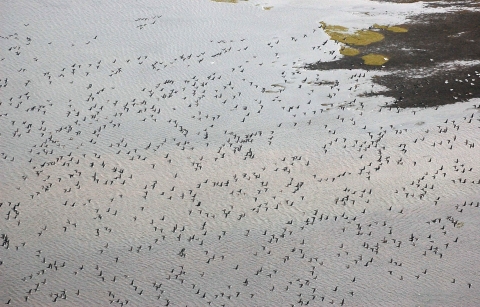
“My initial feeling when I see the first flock of Pacific black brant migrating to Izembek would be ‘Welcome back home’ season is upon us,” says Leticia Melendez. “You can just feel it — the change in the air, the lush green tundra starts to change to the rich fall colors and the temperature dips down. The anglers are few, and we begin to experience the influx of waterfowl hunters arriving from all over the world. Izembek Lagoon is known worldwide for its popular waterfowl hunting opportunities.”
Designated as the first Wetland of International Importance, Izembek Lagoon holds the largest concentration of eelgrass beds in North America. Barrier islands separate the lagoon from the Bering Sea and create the perfect conditions for the flowering underwater plant, which needs shallow water and subtidal zones.
“Pacific black brant diet consists of mostly eelgrass,” said Pat Fitzmorris, former refuge biologist. “You don’t see eelgrass beds like this anywhere else in the world, which is why this lagoon is critically important for their overall survival.
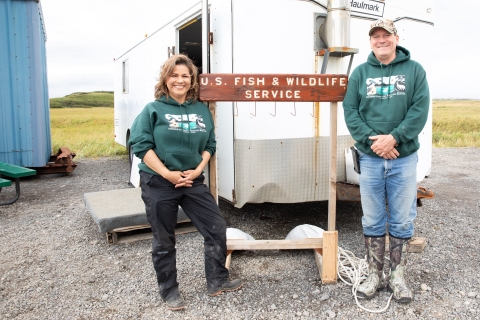
“When they get here in the fall, they’re pretty skinny from breeding migration. The plant is so nutritious for their body composition that 1/3 of their body weight is increased just by the fat content alone from the plant. Sometimes the sky is just black with birds, it’s amazing to see.”
Every year, biologists from agencies all over Alaska come to Izembek to conduct brant population surveys.
“First you’re awestruck by how many birds use this area and then you look down from your boat and notice you’re completely surrounded by eelgrass,” said Tasha DiMarzio, Alaska Department of Fish and Game waterfowl biologist. “You can hardly drive your boat through it! It’s so neat to watch them refuel during this stage of their migration, slurping up the eelgrass like it’s spaghetti.”
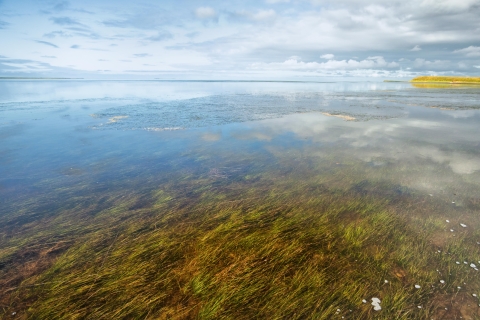
While an entire population of Pacific black brant rely on this area for survival, the lagoon and refuge also support a multitude of other species.
“If I can describe the refuge in one word, it would be dynamic,” said Dimarzio. “From helmet crabs to sea stars all the way up to otters eating urchin that are under the eelgrass beds, it’s amazing how much this habitat supports. Other waterfowl like emperor geese feed on it as well at low tide, but during high tide, they go into the tundra zone and eat the tundra berries. The refuge has so many different ecosystems that aside from ocean dwelling species, brown bears and foxes are some of the other mammals thrive there, as well.”’
Around late October and November, the brant make their 50-hour journey back to Baja California.
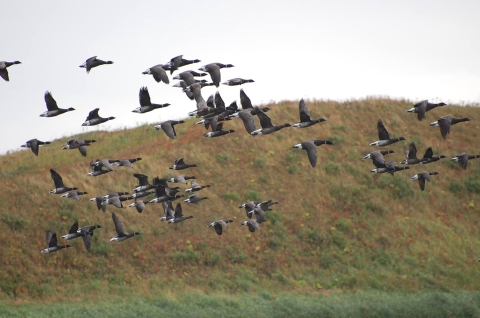
What can we learn about resilience and endurance from the Pacific black brant? Take this time to nourish ourselves, until we can spread our wings and migrate again.
In Alaska we are shared stewards of world renowned natural resources and our nation’s last true wild places. Our hope is that each generation has the opportunity to live with, live from, discover and enjoy the wildness of this awe-inspiring land and the people who love and depend on it.

